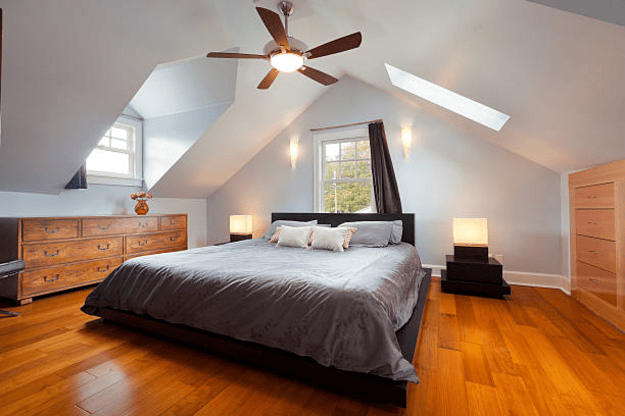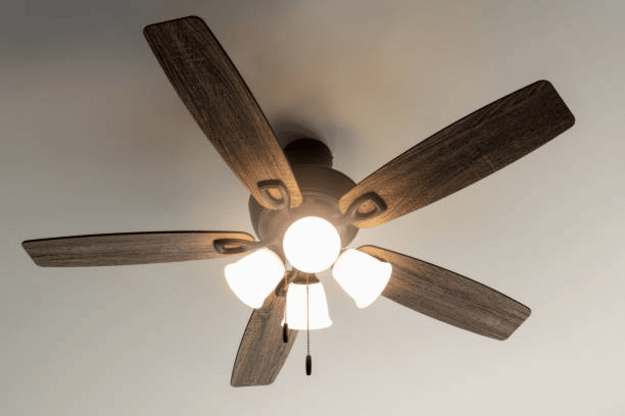When it comes to creating a comfortable and visually appealing space, every detail matters—including the fan you choose. Whether you’re upgrading your living room, bedroom, or office, selecting the right fan involves much more than just picking a model off the shelf.
In this comprehensive guide, we’ll walk you through the crucial aspects of fan selection—from understanding room size to matching the fan’s style with your décor.
We’ll also address frequently asked questions and provide practical tips to ensure that your choice is both functional and stylish.
A well-chosen fan can transform your room by improving air circulation,
reducing energy costs, and adding a distinctive element to your décor. However, choosing the right fan for your room is not as straightforward as it may seem. The process involves careful consideration of several factors:

- Room Size: The fan’s capacity to circulate air efficiently depends largely on the size of the room.
- Design and Style: From modern minimalism to rustic charm, the fan should enhance the overall aesthetic of your space.
- Functionality and Features: Modern fans offer multiple speed settings, remote controls, and even energy-saving modes, making them a versatile addition to any room.
This blog post will provide you with a detailed roadmap on how to assess these factors and make an informed decision. Whether you’re renovating your home or simply looking to update a specific room, our guide on fan selection will help you navigate the myriad of options available in the market.
Understanding Room Size and Its Impact on Fan Selection
The Importance of Room Size
Room size is one of the most critical aspects when it comes to choosing the right fan. A fan that works perfectly in a small bedroom might not be sufficient for a spacious living room. Here’s why room size matters:
- Air Circulation Efficiency: Larger rooms require fans with higher airflow capacity to ensure that cool air reaches every corner.
- Blade Size and Motor Power: The size of the fan blades and the strength of its motor must be proportional to the area you wish to cool.
- Placement and Installation: Ceiling fans, wall-mounted units, and portable fans have different installation requirements that may be more suitable for certain room dimensions.
Calculating the Ideal Fan Size
To determine the ideal fan size for your room, consider the following guidelines:
- For Small Rooms (up to 150 square feet): A fan with a blade diameter of 36 to 42 inches is typically sufficient. These fans are efficient in circulating air in compact spaces without overwhelming the room.
- For Medium Rooms (150 to 300 square feet): Look for fans with a blade diameter of 42 to 52 inches. These fans provide a balanced airflow and are designed to cover medium-sized areas effectively.
- For Large Rooms (over 300 square feet): In larger spaces, you may need fans with blade diameters of 52 inches or more. Alternatively, using multiple fans or a fan with a high CFM (cubic feet per minute) rating can ensure thorough air distribution.
When calculating the right fan size, it’s important to consider the layout and any architectural features that might impede airflow. For instance, rooms with high ceilings or multiple partitions may require additional fans or those with adjustable settings to target specific zones.
Factors Beyond Size
While room size is a major determinant, several other factors influence the effectiveness of a fan:
- Ceiling Height: In rooms with high ceilings, a fan with a downrod is necessary to position it at an optimal height.
- Room Shape and Layout: Long, narrow rooms or spaces with many obstructions may need fans that provide a focused stream of air.
- Usage Patterns: Consider how the room is used throughout the day. Living rooms, for example, might require fans with quieter operation for relaxed settings, whereas home offices might benefit from adjustable speed settings for varying needs.
Matching Fan Style with Your Room’s Décor
The Role of Style in Fan Selection
Choosing the right fan for your room isn’t just about functionality; it’s also an opportunity to enhance your interior décor. The style of the fan can complement or clash with your overall design theme, so it’s essential to consider both aesthetics and performance.
Modern and Minimalist Designs
For those who prefer a sleek, contemporary look, modern fans often feature clean lines, neutral colors, and minimal ornamentation. These fans are designed to blend seamlessly with modern furnishings and can be particularly effective in:
- Living Rooms and Offices: Their unobtrusive design makes them perfect for spaces where the focus is on minimalism.
- Smart Homes: Many modern fans come equipped with advanced features like remote controls, LED lighting, and even smart home integration.
When selecting a modern fan, consider the color palette and materials. Metals like brushed aluminum or matte black finishes can add a touch of sophistication, while white or pastel-colored fans can brighten up a room with a minimalist aesthetic.
Classic and Traditional Styles
If your décor leans more towards classic or traditional styles, you might opt for fans that feature ornate details, wood finishes, or vintage-inspired designs. These fans can serve as a focal point in rooms such as:
- Dining Rooms and Libraries: Their intricate designs can enhance the warmth and character of a space.
- Older Homes: Fans that match the historical period of your home can help maintain an authentic look.
When choosing a traditional fan, pay attention to the materials and craftsmanship. High-quality wood or metal accents can add a timeless appeal, while decorative elements like tassels or intricate patterns can elevate the overall design.
Industrial and Contemporary Fusion

For spaces that combine industrial elements with modern design, consider fans that feature exposed mechanical components, robust construction, and a utilitarian aesthetic. Industrial-style fans are well-suited for:
- Lofts and Urban Apartments: Their rugged look can complement exposed brick walls, concrete floors, and metal fixtures.
- Modern Offices: They provide a distinctive, edgy look while still being functional.
In selecting an industrial-style fan, look for materials like steel and iron, and consider designs that incorporate a raw, unfinished look. These fans often come with adjustable settings that allow you to control both airflow and ambient lighting.
Accent and Statement Pieces
Sometimes, the fan itself can become the centerpiece of your room. Accent fans are designed not only to provide cooling but also to serve as conversation pieces. These fans often feature unique designs, bold colors, or artistic elements that set them apart. They work best in:
- Entertainment Rooms: Where style and statement pieces are appreciated.
- Boutique Hotels or Trendy Restaurants: Where ambiance plays a critical role in the overall experience.
When opting for a statement fan, ensure that it still meets your functional requirements. It’s important to balance aesthetics with performance, so choose a model that offers both visual appeal and sufficient air circulation.
Practical Considerations for Fan Selection
Energy Efficiency
In today’s environmentally conscious world, energy efficiency is a top priority for many homeowners. When selecting a fan, look for models that are Energy Star-rated. These fans are designed to consume less power while providing excellent performance. Energy-efficient fans not only help reduce your carbon footprint but also save you money on electricity bills in the long run.
Noise Level
Noise can be a significant factor, especially if the fan is installed in a bedroom or home office. Look for fans that offer quiet operation. Many modern models come with noise-reduction features, ensuring that the fan’s operation doesn’t interfere with your daily activities or sleep.
Installation and Maintenance
Before purchasing a fan, consider the installation requirements and ongoing maintenance:
- Ease of Installation: Some fans, such as ceiling fans, may require professional installation, especially in rooms with high ceilings. Others, like portable fans, are ready to use out of the box.
- Maintenance: Regular cleaning and maintenance are essential for optimal performance. Consider models that are easy to disassemble and clean, with accessible blades and components.
Smart Features and Controls
Modern technology has revolutionized the way we interact with home appliances, and fans are no exception. Many contemporary fans come equipped with smart features such as:
- Remote Controls and Timers: Allowing you to adjust speed settings, turn the fan on or off, and set timers for energy savings.
- Smart Home Integration: Some models can be connected to home automation systems, enabling voice control or smartphone app integration.
These features add convenience and can enhance the overall user experience, making it easier to adapt the fan’s performance to your specific needs throughout the day.
Comprehensive Fan Selection Tips

1. Evaluate Your Space
Begin by measuring your room’s dimensions. Calculate the square footage and note any architectural features that might affect airflow. Consider factors such as ceiling height, room shape, and the placement of furniture.
2. Define Your Style
Determine the overall aesthetic of your room. Are you aiming for a modern, minimalist vibe, or do you prefer a more classic, traditional look? Your choice of fan should enhance your décor, so make sure the design, color, and material align with your style.
3. Consider the Functionality
Beyond aesthetics, consider the fan’s performance:
- Airflow and CFM Rating: Choose a fan with an appropriate CFM rating for your room size. Higher CFM means better airflow.
- Speed Settings and Controls: Ensure the fan has multiple speed settings to adapt to varying weather conditions and personal comfort levels.
- Energy Consumption: Opt for energy-efficient models to save on electricity bills and reduce environmental impact.
4. Installation and Maintenance
Assess the ease of installation based on the type of fan you’re considering. If you’re opting for a ceiling fan, verify that your ceiling can support it and that you have the necessary mounting hardware. Also, consider how easy it will be to clean and maintain the fan.
5. Additional Features
Look for extra features that may enhance your comfort and convenience, such as remote controls, smart home integration, or lighting options that can double as mood setters.
FAQs
Q1: How do I determine the right fan size for my room?
A: To determine the right fan size, start by measuring your room’s square footage. For small rooms (up to 150 square feet), a 36 to 42-inch fan is usually sufficient. Medium-sized rooms (150-300 square feet) work best with a 42 to 52-inch fan, while large rooms (over 300 square feet) typically require a fan with a blade diameter of 52 inches or more. Consider additional factors such as ceiling height and obstructions that might affect airflow.
Q2: Can I use a ceiling fan in a room with a very high ceiling?
A: Yes, ceiling fans can be used in rooms with high ceilings; however, you may need a downrod to position the fan at an optimal height for effective air circulation. This ensures that the airflow reaches the occupied area rather than being trapped high above the room.
Q3: What are the benefits of an energy-efficient fan?
A: Energy-efficient fans help reduce your overall energy consumption and lower electricity bills. Models with an Energy Star rating are designed to use less power while still delivering strong airflow. They also tend to produce less noise, making them ideal for bedrooms or offices.
Q4: How do I ensure that my fan’s style matches my room décor?
A: When selecting a fan, consider the existing style of your room. Modern spaces benefit from sleek, minimalist designs, while traditional settings might be complemented by fans with ornate details and classic finishes. Look for models that incorporate materials and colors that blend seamlessly with your décor.
Q5: Are there any smart features available in modern fans?
A: Absolutely. Many modern fans come equipped with features like remote controls, timers, and even smart home integration. Some models can be controlled via smartphone apps or voice assistants, offering convenience and enhanced functionality.
Q6: How often should I clean and maintain my fan?
A: Regular maintenance is essential for optimal performance. It’s recommended to dust and clean your fan’s blades and motor components every few months, or more frequently if you live in a dust-prone area. Always refer to the manufacturer’s guidelines for cleaning instructions.
Q7: What should I do if my room layout is irregular or has obstructions?
A: For rooms with an irregular layout or obstacles, consider a fan that offers adjustable speed settings or oscillation features. You might also explore using multiple fans to ensure that airflow is distributed evenly throughout the space.
Conclusion
Choosing the right fan for your room is a decision that balances functionality with style. By understanding the importance of room size, matching the fan’s design with your décor, and considering additional features like energy efficiency and smart controls, you can make an informed decision that enhances both the comfort and aesthetics of your space.

